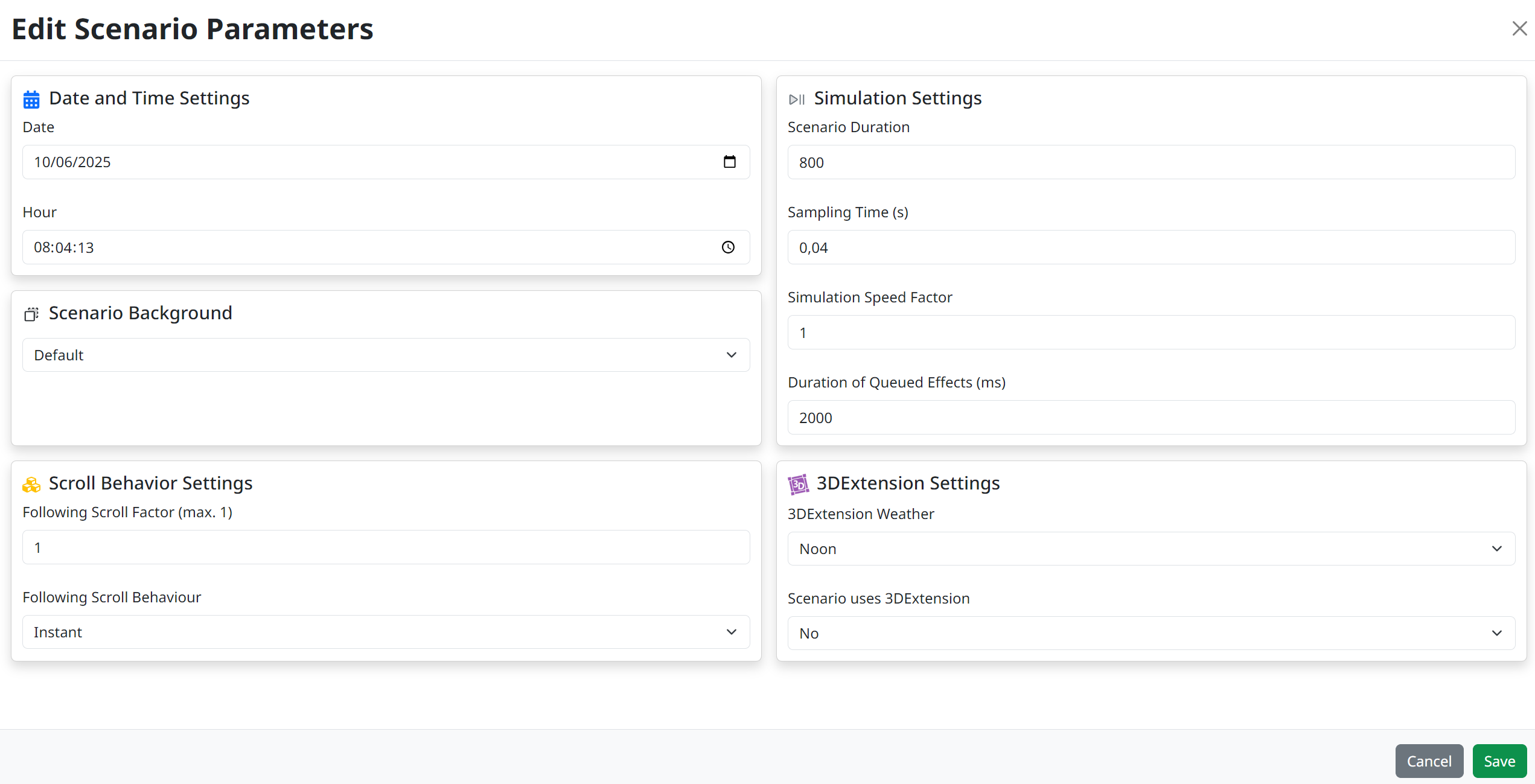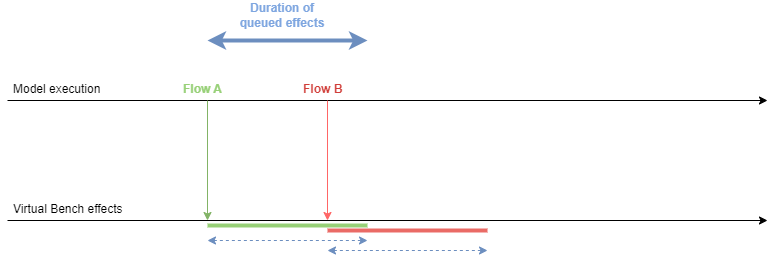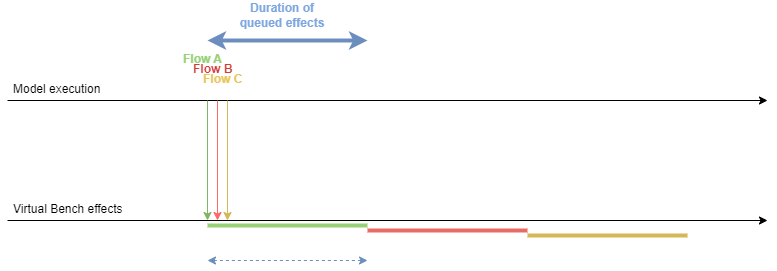Queued effects and permanent effects
To start mapping your model with Virtual Bench, you must have imported your types and flows, according to the method described in the related page.
What is it?
When a lot of data needs to be visualized, it can sometimes be overwhelming. For example, you receive a lot of flows from your model in a very short amount of time : As a result, you visualize everything at the same time and you have no idea which flow has been received first, and there is not any visual hint of the order of reception of all of your flows. This is why queued effects can become useful.
Queued effect
The queued effect allows you to build a queue of all the flows that you receive, and apply their mappings one by one, with time between each effect. If you receive 10 flows in less than 1 second, you normally wouldn't be able to see the order of the effects. With queued effects, you can decide for some of the flows to wait for the effects to be applied and visualized by the Virtual Bench user before applying the effect of the next flow.
Permanent effect
By default, all mappings are considered permanent. This means that all effects will be applied till the end of the simulation, unless another mapping reverts it. For example, if you want to change the color of a text element from black to green, the text will stay green. But you can also make your mappings non permanent. In our example, this would mean that when the flow is received, the text will turn from black to green, then it will turn black again after a few seconds.
Manage Duration
The duration of a mapping when it is not permanent, or the time to wait between each flow, is called Duration of queued effects. This is a project setting, meaning that it will apply for each scenario in the project.
To access this setting, go in the scenario tab, you can open the scenario parameters pop-up, by left-clicking on the "Edit scenario parameters":

The scenario parameters pop-up allows to change scenario parameters:

You can change the value called Duration of queued effects, its default value is 2000 ms.
Manage mapping effects
When creating a mapping, or changing the definition of a mapping, you can choose if you want it to be queued and permanent.

Permanent and not queued
By default, the mapping is permanent and not queued. This will result in the following logic:

The mapping will be applied right when the flow is received, and the effect will stay till the end.
Permanent and queued
When you give your mapping a queued effect, it will wait for all previous mappings of each flow in the queue to be applied, for at least the specified amound of time: Duration of queued effects. This will result as the following :

Not permanent and queued
If you want to finish the effect of the mapping right before the next flow apply its mapping, you can set it as both not permanent and queued. This will give the following effect:

Not permanent and not queued
In this last example the effects will be applied right after the flow is received, but will last for the specified amount of time:

Example of usage
If you have too many flows that are received in a very short amount of time, setting your mappings to have queue effect can be great a step to increase visibility in you simulation. In this example, the mappings are not permanent, but also not in queue:

When adding queued effects to the mappings, this gives a better result:
